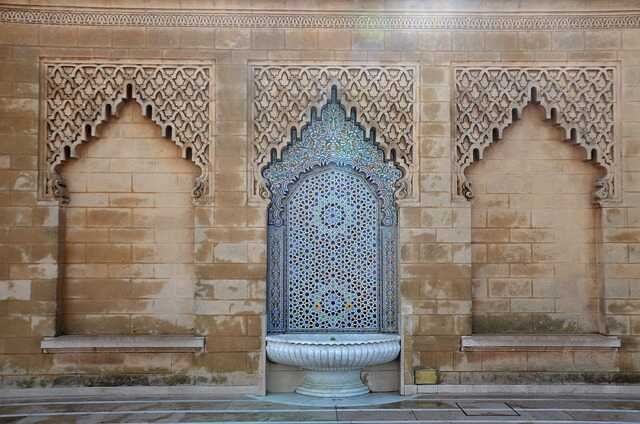Understanding Islamic Banking: A Comprehensive Guide to Riba Free Transactions, Murabaha, Takaful, and Sukuk
Islamic banking, a growing and dynamic financial system, adheres to the principles of Islamic Shariah, avoiding riba (usury) and other prohibited practices. It offers a range of financial products and services that align with Islamic values, promoting ethical and socially responsible banking practices.
Islamic banking principles like Riba, Murabaha, Takaful, and Sukuk underscore the fundamental values of fairness, ethical conduct, and risk-sharing in financial dealings. These principles align with Sharia law, emphasizing ethical and moral practices in economic activities.
Examples:
- Riba: Al-Baqarah Quran 2:275-279, which emphasizes the prohibition of Riba and encourages charitable deeds.
- Murabaha: A bank purchasing a property and reselling it to a client with a transparent markup.
- Takaful: Members contributing to a fund for mutual protection against specific losses, adhering to cooperative principles.
- Sukuk: An infrastructure project financed through Sukuk where investors share profits and risks.
Islamic banking stands as an alternative, promoting ethical and inclusive financial practices, emphasizing transparency, fairness, and risk-sharing.
Benefits:
- Ethical Standards: Upholding ethical values and avoiding exploitative practices.
- Risk-Sharing: Encouraging a fair distribution of risk among participants.
- Economic Stability: Promoting stable financial systems based on tangible assets and shared profits.
Challenges:
- Complexity: Structuring Sharia-compliant financial products can be intricate.
- Global Integration: Aligning Islamic finance with global financial systems.
- Education: Raising awareness and understanding of Islamic finance globally.
The Future of Finance: How AI, Data, and Fintech Will Revolutionize the Way We Manage Our Money
Guide to Riba Free Transactions, Murabaha, Takaful, and Sukuk
Islamic banking offers a unique financial model built on ethical foundations, aiming for economic growth while maintaining adherence to Sharia principles. Understanding these concepts fosters a more comprehensive comprehension of Islamic finance and its role in contemporary global economics.
Riba: The Prohibition of Usury
Riba is the Arabic term for usury, defined as the charging of interest on a loan. It is strictly prohibited in Islam, as it is considered unjust and exploitative. Islamic banking eliminates riba by substituting profit-and-loss sharing arrangements for interest-based transactions.
Riba in the context of Islamic banking refers to the practice of interest or profits obtained from money loan transactions. In the conventional banking sense, interest is charged on money loans, while in the Islamic banking system, interest is considered usury (riba) which is not permitted.
How do banks make a profit with riba system?
Riba is a prohibited concept in Islam that refers to profits obtained from borrowing money in a way that is considered unfair or detrimental to one of the parties involved in the transaction.
In the conventional banking system, banks often profit from interest or usury charged on loans given to customers. For example, if someone borrows money from a bank, the bank will set a certain interest rate. When borrowers repay the loan, they have to pay back more than the amount borrowed, namely the principal amount plus interest.
Meanwhile, in the Islamic banking system, which is based on the prohibition of usury, banks earn profits in a way that is based more on the principle of profit sharing or mutual profit. One mechanism that is often used is profit-sharing or fair profit-based financing, such as in mudharabah or musharakah schemes. In this scheme, the bank shares profits and risks with the party who borrows or invests, so that the bank does not obtain fixed profits from the loan, but shares profits or losses according to previously agreed agreements.
Example of interest calculation in conventional banking:
Suppose someone borrows $10,000 from a bank at an annual interest rate of 5% for 1 year.
Interest to be paid = Loan principal x Interest rate
Interest = $10,000 x 0.05 = $500
Total amount to be returned = Principal + Interest
Total = $10,000 + $500 = $10,500
In Islamic banking, an alternative that is often used is the Murabaha concept. Murabaha is a buy-sell where the bank buys an asset at the client’s request and then sells it to the client at a fixed profit. The following is an example of a Murabaha calculation:
A client wants to buy a car for $20,000. The bank buys the car and then sells it to the client for $25,000, making a profit of $5,000.
So, the client pays $25,000 to the bank within the agreed time in exchange for financing.
This is a simple example of calculations in the Islamic banking system that uses the Murabaha principle to facilitate transactions without involving interest.
Financial Risk Management Unveiled: A Deep Dive into Strategies and Solutions
Murabaha: Sale with Mark-up
Murabaha is a widely used Islamic finance product, involving the purchase of an asset by a bank and its subsequent sale to a client at a profit-based markup. The client pays the agreed-upon price in installments, and the bank bears the risk of ownership during the transaction.
Example of Murabaha: Home Financing
A customer seeks a home loan from an Islamic bank. The bank purchases the desired property and then sells it to the customer at a profit-based markup. The customer pays the purchase price in installments over an agreed-upon period.
Formula for Murabaha 1:
Purchase Price + Profit = Murabaha Price
Murabaha is a concept in Islamic banking that is used for buying and selling transactions. In Murabaha, the bank buys assets at the client’s request and sells them back to the client at a pre-agreed markup.
Murabaha Formula 2:
Selling Price = (Purchase Price) + Markup
Example of Murabaha calculation:
A client wants to buy a computer that costs $1,000. The bank purchased the computer at the client’s request and sold it to the client at a markup of $200.
Selling Price = Purchase Price + Markup
Sale Price = $1,000 + $200 = $1,200
In this transaction, the bank purchases the computer at the client’s request for $1,000 and resells it to the client for $1,200, which includes the original cost of the computer plus a previously agreed upon markup. This allows clients to obtain desired assets without involving interest payments, in accordance with Islamic financial principles which prohibit usury.
Takaful: Islamic Insurance
Takaful is the Islamic alternative to conventional insurance, based on the principles of mutual cooperation and risk sharing. It aims to protect individuals and communities from financial losses while adhering to Islamic values.
Types of Takaful:
- Life Takaful: Covers death, disability, and other life contingencies.
- General Takaful: Covers property damage, loss of income, and other non-life risks.
Example of Takaful: Motor Vehicle Insurance
A Muslim driver purchases motor vehicle takaful from an Islamic insurance company. The company pools contributions from multiple policyholders to provide compensation in case of accidents, theft, or other vehicle-related losses.
Takaful shares the risk among the participants (insured) and provides financial protection. In Takaful, participants pay contributions (tabarru) into a joint fund which will be used to help participants who experience losses or certain events.
Takaful Formula:
Contribution (Tabarru) = Total Claims / Total Participants
Example of Takaful calculation:
For example, there are 100 participants in a Takaful program who want to protect themselves against vehicle losses. They agree to contribute if one of the participants suffers a loss.
Total claims in one year were $50,000. So, the contribution (tabarru) of each participant can be calculated as follows:
Contribution (Tabarru) = Total Claims / Total Participants
Contribution (Tabarru) = $50,000 / 100 = $500
Each participant will pay a contribution of $500. If a participant experiences a loss, these funds will be used to cover the loss. This approach allows participants to help each other and share risks according to Islamic finance principles.
Sukuk: Islamic Bonds
Sukuk are Islamic bonds that represent ownership in an underlying asset, such as a property or project. They offer investors Shariah-compliant returns while aligning with Islamic values.
Types of Sukuk:
- Ijara Sukuk: Investors purchase the right to utilize an asset, generating rental income.
- Murabaha Sukuk: Investors purchase an asset from the issuer, receiving profit from the asset’s resale.
- Istisna Sukuk: Investors finance the construction of an asset, receiving profit from its sale or lease.
Example of Sukuk: Infrastructure Financing
An Islamic bank issues sukuk to finance the construction of a new bridge. Investors purchase sukuk certificates, representing ownership in the bridge project. The bridge’s tolls generate revenue, which is distributed to sukuk holders as returns.
Read also: The Future of Finance: How AI, Data, and Fintech Will Revolutionize the Way We Manage Our Money
Conclusion
Islamic banking offers a unique and ethical approach to financial services, aligning with Islamic values and principles while providing competitive products and services to customers. Riba-free transactions, profit-and-loss sharing arrangements, and risk-sharing mechanisms are key features of Islamic banking, promoting social responsibility and ethical practices. As the Islamic finance industry continues to grow, it is expected to play an increasingly significant role in the global financial landscape.
Sources: IslamicMarkets, PinterPandai, IslamSuciBeriman, International Monetary Fund (pdf)
Photo credit: via Pixabay



